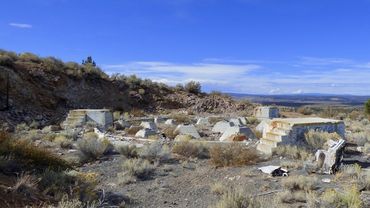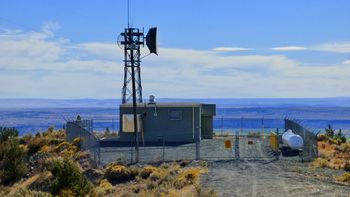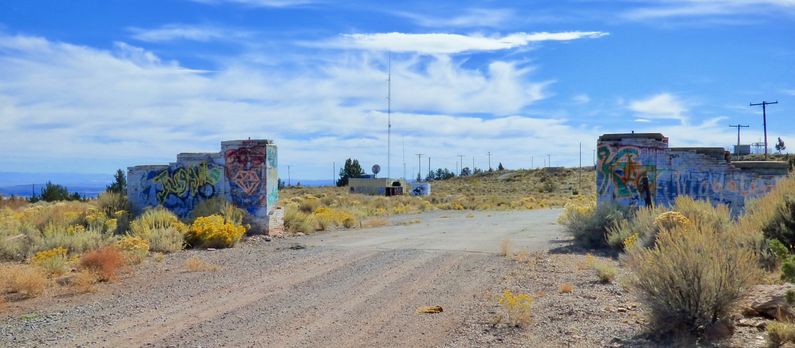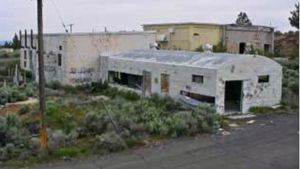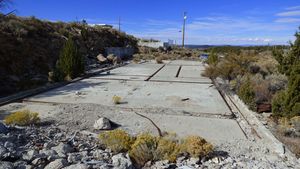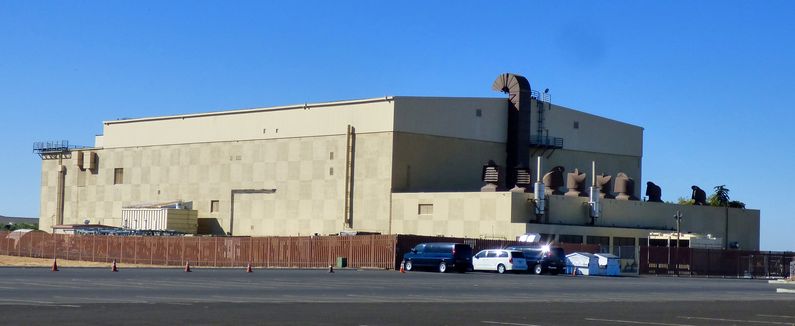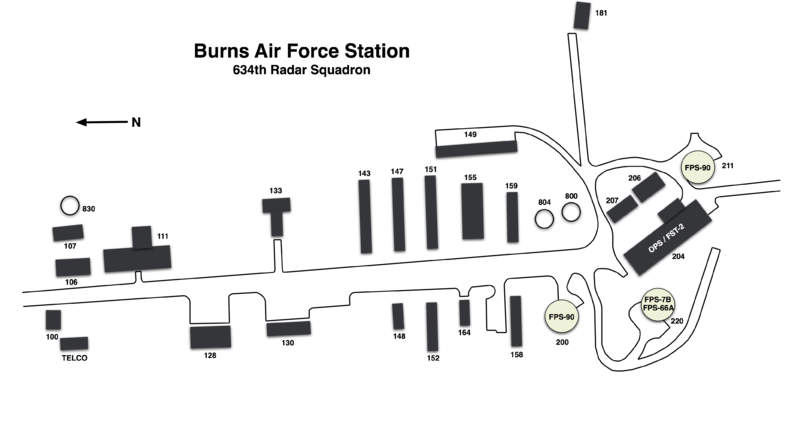Burns Air Force Station
|
Burns Air Force Station (1955-1970) - A Cold War Air Force Radar Station first established in 1955 near Burns, Harney County, Oregon. Named Burns Air Force Station after the location. Initially assigned a Permanent ID of M-118 and later a Sage ID of Z-118. Abandoned in 1970. HistoryEstablished in 1955 and became operational on 8 Jun 1955 as Burns Air Force Station manned by the 634th AC&W Squadron. The station initially had both a Ground-Control Intercept (GCI) and an early warning mission. The early warning mission involved tracking and identifying all aircraft entering their airspace while the GCI mission involved guiding Air Force interceptors to any identified enemy aircraft. Controllers at the station vectored fighter aircraft at the correct course and speed to intercept enemy aircraft using voice commands via ground-to-air radio. Initial equipment included the MPS-7 mobile search radar and by 1959 two FPS-6 height-finders were added.
SAGE System TransitionThe transition of the manual GCI system to the automated SAGE system began with the installation of the FST-2 coordinate data transmitter and search radar upgrades. The FST-2 equipment digitized the radar returns and transmitted the digital returns to the SAGE direction center. Under the SAGE System, interceptor aircraft were directed to their targets by the direction center computers and controllers, greatly reducing the need for local controllers and equipment at every radar station. The FST-2 was a very large digital system using vacuum tube technology. Over 6900 vacuum tubes were used in each FST-2 requiring 21 air-conditioned cabinets, 40 tons of air conditioning, 43.5 kva of prime power, and usually a large new addition to the operations building. The FST-2B modification added two more cabinets but with newer solid-state (transistor) technology to process coded responses from aircraft transponders. SAGE System OperationThe site began operation as a SAGE System site in January 1961, initially feeding the Stead SAGE Direction Center DC-16. With the closure of Stead AFB and DC-16 in 1966, Burns AFS was connected to the Adair SAGE Direction Center DC-13. The search radar was upgraded to an FPS-7B and both height-finder radars became FPS-90s. In July 1964 a serious fire destroyed the FPS-7B search radar and it was replaced with an FPS-66A search radar from Condon Air Force Station. Condon had just installed a new FPS-27 and their FPS-66A was surplus. The removal of the FPS-7A and the replacement with the FPS-66A took about two months to complete. With the closure of the Adair SAGE Direction Center DC-13 in 1969, Burns AFS was connected to the McChord SAGE Direction Center DC-12 until the site closed a year later.
ClosureBurns AFS and the 634th Radar Squadron were deactivated on 30 Sep 1970. Gap Filler RadarBurns AFS was responsible for the maintenance of a single remote unattended gap-filler radar site. The unattended gap filler sites were placed in locations where the main search radar lacked coverage. These sites were equipped with short range FPS-14 or FPS-18 search radars and FST-1 Coordinate Data transmitters that sent digitized radar target data to a SAGE direction center and to the main radar site. Both the radar set and the FST-1 were dual channel to increase site up time. Maintenance teams were dispatched for regularly scheduled maintenance or when fault indicators on the FSW-1 remote monitoring equipment suggested the site had problems. The FSW-1 also allowed remote operation of specific functions such as channel changes for the radar and for the FST-1, it also allowed remote operation of the diesel generators at the gap filler site. The Burns AFS gap-filler site was located at Burns Junction and operated with an FPS-18 and FST-1 between 1958 and 1960.
Physical PlantThe physical plant of the site was divided into an upper main site, a lower housing area, and a radio site. The upper main site housed the operations building, the radar towers, the enlisted barracks, the bachelor officer's quarters, the orderly room, the chow hall, the motor pool, and the backup generators. Apart from the main site just outside the town of Burns was a small housing area for critical married personnel. A separate radio site housed the radio equipment for directing aircraft intercepts.
Current StatusAbandoned in Burns, Harney County, Oregon. The main site buildings were abandoned in place by the Air Force when the site closed and was left to deteriorate. By 2004 the remaining 25 buildings on the site had been severely vandalized to the point where they were physical hazards. The EPA directed a removal action and between 10 Jun 2004 and 15 Oct 2004 the remaining buildings and radar towers were removed down to the foundations and the sites were remediated. Only three of the original buildings remain the two radio buildings and the Telco building. The housing area homes are in private hands and are well kept. Most have been upgraded with metal roofs and new siding and it would be hard to know that it was a military housing area.
See Also:
Sources:
Links:
Fortification ID:
Visited: 8 Oct 2016 | ||||||||||||||||||||||||||||||||||||||||||||||||||||||||||||||||||||||||||||||||||||||||||||||||||||||||||||||||||||||||||||||||||||||||||||||||||||||||||||||||||||||||||||||||||||||||||||||||||||||||||||||||||||||||
